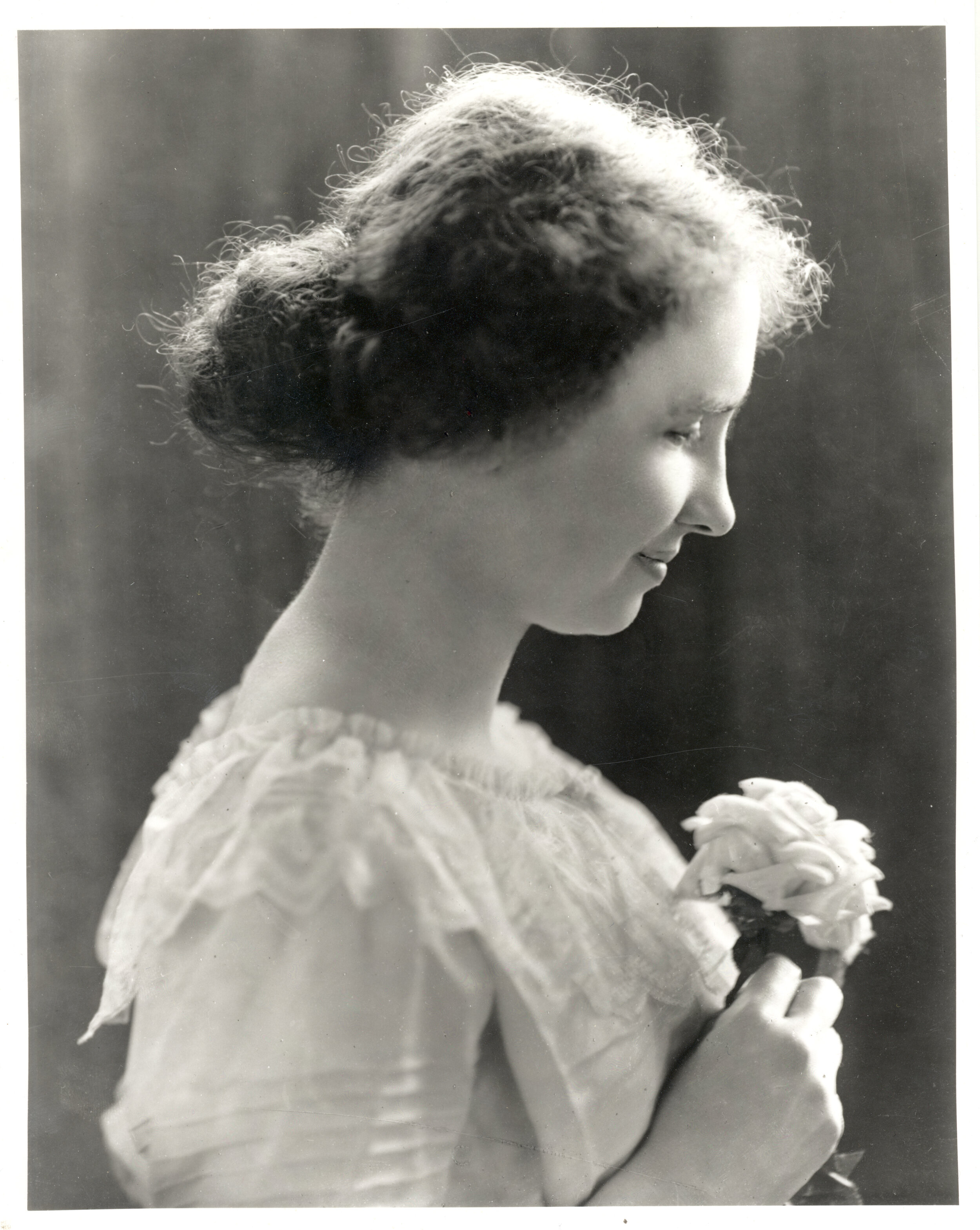Induction Category:
Reformers
Inducted:
2006
“I am not dumb now.” These are the five words that Helen Keller vocally exclaimed to the public in 1930. Deaf and blind since she was 19 months old, the then 50-year-old Keller was also considered by many to be mute. When she first told her teacher, Anne Sullivan, that she wanted to be able to speak using her mouth and not just her hands, Sullivan considered the challenge insurmountable. With the resolve so characteristic of her life, Keller was determined to prove the world wrong. She was not dumb, not in any sense of the word. It was with this same tenacity that Keller fought for others’ rights and made a name for herself as one of the world’s most respected and tireless champions of civil liberties. Keller made Easton, CT her home for the last three decades of her life.
Helen Adams Keller was born with full sight and hearing in Tuscumbia, Alabama on June 27, 1880, the daughter of Captain Arthur Henley Keller and Kate Adams Keller. In 1882, the young infant fell ill with what, at the time, was called a brain fever. Today, it is thought that Keller had suffered from either scarlet fever or meningitis. Shortly after her fever broke, her mother noticed a change in the baby; she was no longer responsive to noise or gestures. The illness left Keller unable to see, hear, or speak. Keller lived most of her early years without a means of communicating with those around her, a frustration that turned her into an unruly child. When she was just six-years-old, her concerned parents sought out the advice and assistance of Dr. Alexander Graham Bell, famous for his invention of the telephone. Dr. Bell, who later became one of Keller’s dearest friends, recommended that the Kellers visit Boston’s Perkins Institute for the Blind. It was through his intervention that Anne Sullivan entered Keller’s life.
Sullivan, whom Keller came to simply call “teacher,” had lost the majority of her sight as a child and had trained at the Perkins Institute for the Blind in manual finger-spelled alphabet. She brought these skills with her to the Keller household in Alabama, where she began tutoring the young Helen Keller, who was then seven years old. When Sullivan arrived at her student’s home, she gave Keller a doll, and “doll” became the first word Sullivan tried to teach Keller how to finger-spell. As time went on, Sullivan finger-spelled multiple words with Keller, but she was not connecting words with their meanings. Oftentimes, she would even refuse “teacher’s” lessons. Keller continued in her unruly behavior, but Sullivan maintained her patience. Then, one day, when Sullivan and Keller were getting water from the water pump, Keller underwent a transformation. “Teacher” tapped the word “water” onto one of Keller’s hands, placed Keller’s other hand under the pump’s spout, and Keller understood. This newfound understanding urged Keller to learn more words and, by the evening, she had acquired 30 words. It was Sullivan’s ability to reach Keller and tap into her great potential that inspired William Gibson to write The Miracle Worker, a play about the teacher. The play was later turned into a 1962 film starring Anne Bancroft and Patty Duke.
With Sullivan’s help, Keller stayed on top of her studies throughout her childhood and teenage years. In 1900, she began undergraduate studies at Radcliffe College and graduated four years later cum laude and with a keen desire to battle publicly for equality. She published her autobiography, The Story of My Life, in 1903, and The World I Live In, explaining how she felt about the world, in 1908.
Keller dedicated the majority of her working life to advocacy on behalf of the disabled, especially the deaf and blind communities. She served as Ambassador for the American Foundation for the Blind and engaged in many public speaking and lobbying efforts. At the 1925 Lions Club International Convention, Keller’s speech called upon Lions Club members to enlist in the fight for the blind. She asked them, “Will you not constitute yourselves Knights of the Blind in this crusade against darkness?” compelling the Lions Club to incorporate sight programs into their service initiatives.
Keller was also very politically aware, and many of her views brought her under public scrutiny. She wholeheartedly believed in the suffragist movement, was a proponent of birth control, publicly expressed distaste for the war during World War I, and considered herself a socialist. Throughout her life, Keller wrote many books and essays, but her book Out of the Dark highlighted her socialist views and was burned by the Nazis. She responded to this book-burning in a letter, in which she spoke out against the atrocities of Nazism.
Keller committed her entire adult life to the battle for civil liberties and received numerous honors for her work. She was presented the Presidential Medal of Freedom by President Lyndon Johnson in 1964, was the first woman to receive an honorary Doctorate from Harvard, and was named one of the 100 most influential people of the 20th Century by Time Magazine. Keller moved to Connecticut in 1936 and lived in Easton until her death in 1968.
Born: 1880
Died: 1968
Town: Easton
During This Time:
1921 - 1945: Prosperity, Depression, & War Learn more about the time period in which this Inductee lived.
"One can never consent to creep when one feels an impulse to soar."
-Helen Keller


